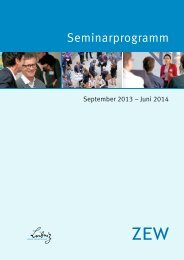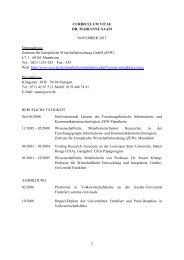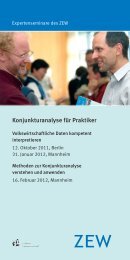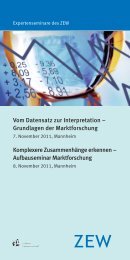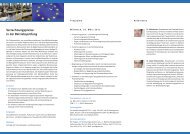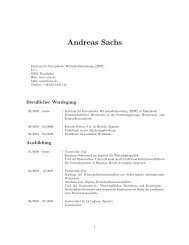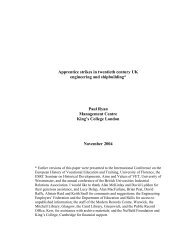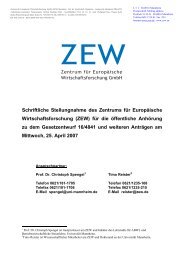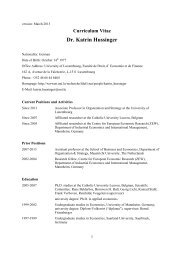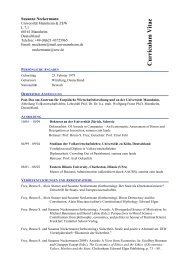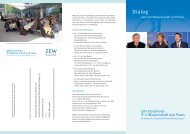Does Alma Mater matter? Evidence from Italy*
Does Alma Mater matter? Evidence from Italy*
Does Alma Mater matter? Evidence from Italy*
You also want an ePaper? Increase the reach of your titles
YUMPU automatically turns print PDFs into web optimized ePapers that Google loves.
Since both the pupil – teacher ratio and the number of students are in<br />
logs, the number in the tables can be interpreted as elasticities. We find<br />
evidence of a negative and statistically significant relationship between the<br />
pupil-teacher ratio and the college by field of study wage and employment<br />
effects. The elasticity ranges <strong>from</strong> -.128 to -.214 for earnings and <strong>from</strong> -.070<br />
to -.113 for employment probability. The faculties in private colleges of our<br />
sample have on average a pupil – teacher ratio which is close to 50 percent<br />
lower than the ratio in the faculties of public universities. Our estimates<br />
suggests that this gap translates in a 5 to 10 percent positive gap for earnings<br />
and in a 5 percent positive gap for employment.<br />
There is also evidence of a positive and statistically significant<br />
relationship between log size and the wage and employment effects, with<br />
elasticities close to .25 for earnings and to .08 for employment. In our sample,<br />
the faculties of private colleges are about 23 percent smaller than the faculties<br />
in public universities. Therefore, this effect partially cancels out the effect of<br />
the pupil – teacher ratio. One possible objection is that larger faculties may<br />
have more students who are staying longer than required to complete the<br />
degree (fuori corso). In this case, size is not necessarily an indicator of good<br />
quality. In regressions not displayed here, we control for the percentage of<br />
“fuori corso” students, but this variable is never statistically significant, nor<br />
does it change the effect of size.<br />
Finally, we find that the younger the faculty the higher the wage and<br />
employment effect. In particular, a faculty 10 years younger generates a 0.04<br />
percent increase in earnings and a 0.001 percent increase in the probability of<br />
employment. Therefore, these effects are small.<br />
The differences in pupil – teacher ratio, size and year of establishment<br />
explains an important part of the difference in wage effects between private<br />
and public institutions. The private college dummy remains, however, positive<br />
and statistically significant in the case of the employment effects, suggesting<br />
that other factors are at play.<br />
27



